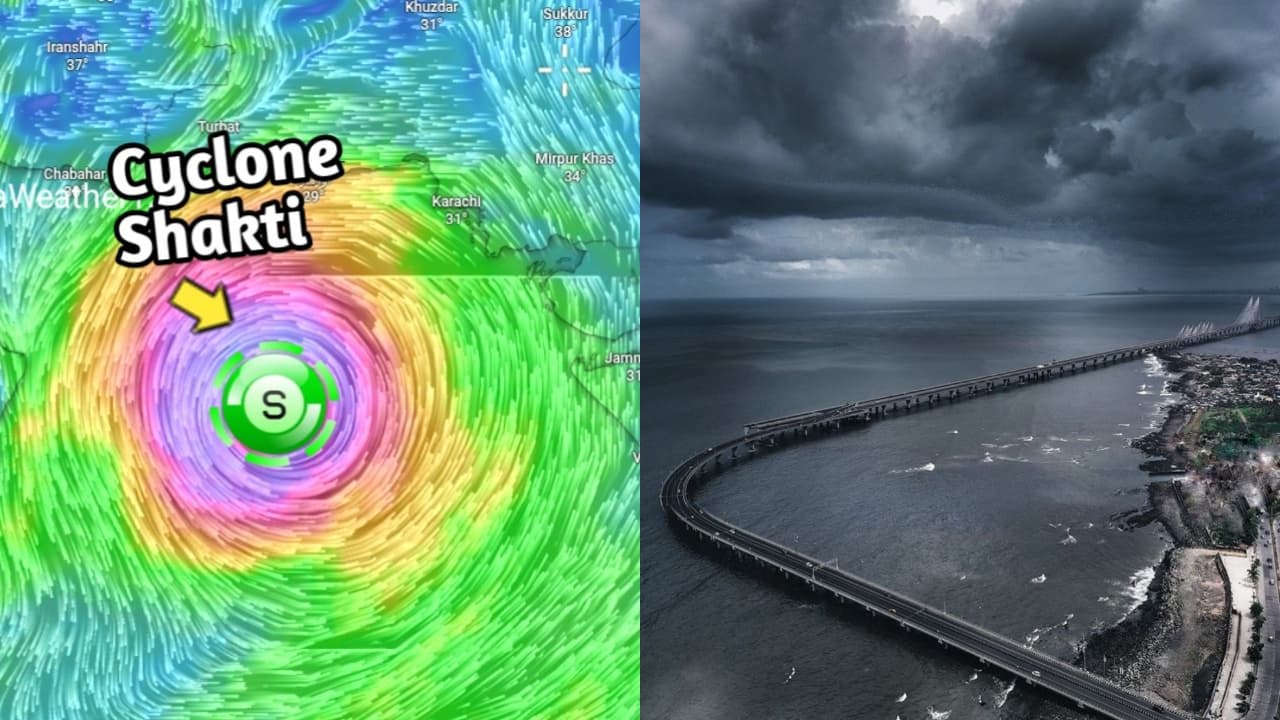Cyclone Shakhti hits India, causing heavy rain, strong winds, and rough seas along Gujarat and Maharashtra coasts. IMD issues alerts for safety, urging residents and fishermen to stay prepared amid the severe storm.
The Arabian Sea has churned into a stormy zone with the arrival of Cyclone Shakhti, the first cyclonic storm of the post-monsoon season. While the system is still offshore, it is rapidly gaining strength and causing turbulent sea conditions off the Gujarat coast. The India Meteorological Department (IMD) has issued alerts, urging fishermen and coastal residents to take necessary precautions.
Severe Cyclone With Strong Winds
Shakhti has intensified into a severe cyclonic storm, with winds reaching 100 kmph and gusts potentially higher. The storm is currently around 420 km from Dwarka, Gujarat, moving west-southwest. Forecasts indicate that it will begin turning east-northeast from Monday, gradually losing strength as it moves.
Rough Seas Expected Along Coastal Areas
The IMD has warned of rough to very rough seas along the Gujarat and North Maharashtra coasts and even near the Pakistan coastline until Sunday. Fishermen are strictly advised not to venture into the Arabian Sea, especially in the northwest, northeast, and central regions, until Tuesday.
Alert Issued for Mumbai and North Maharashtra
Heavy rain and strong winds are expected across Mumbai, Thane, Palghar, Raigad, Ratnagiri, and Sindhudurg from October 3 to 7. Wind speeds along the north Maharashtra coast could range 45-55 kmph, with gusts up to 65 kmph. Authorities have urged residents to stay indoors where possible and avoid unnecessary travel.
Tracking and Movement of the Cyclone
On Friday, Shakhti was positioned nearly 300 km west of Dwarka, 330 km south-southwest of Karachi, and 360 km west of Porbandar, moving west-northwest at 8 kmph.
Cyclone Naming and Past Cyclones
Shakhti was named by Sri Lanka according to the WMO/ESCAP naming convention, which involves 13 countries in the region. Notable recent cyclones in the Arabian Sea include Tauktae (2021) and Biparjoy (2023), although this basin generally experiences fewer cyclones compared to the Bay of Bengal.
Forecast and Safety Precautions
Experts predict that Shakhti will remain offshore but intensify over the next two days before weakening from Monday. Coastal communities are advised to monitor official updates, secure homes and boats, and follow safety instructions issued by authorities.
Even if Shakhti does not make landfall, its heavy rains and strong winds could disrupt normal life along Gujarat and Maharashtra coasts. Staying alert, avoiding risky travel, and following official advisories are essential to ensuring safety during this storm.
